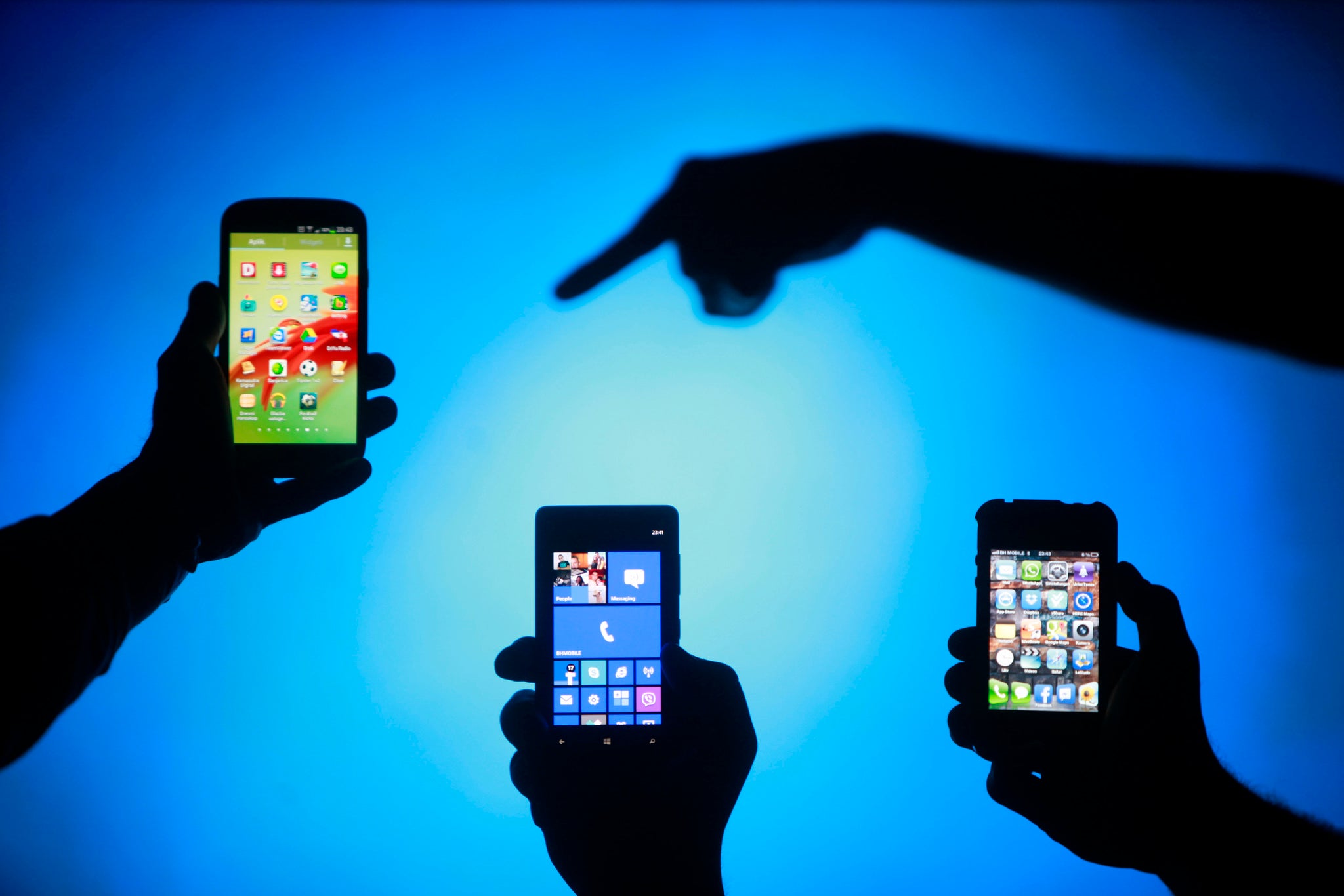Smartphones outsell basic handsets for the first time
Latest reports on mobile sales also shows that Windows Phone OS has overtaken BlackBerry

Your support helps us to tell the story
From reproductive rights to climate change to Big Tech, The Independent is on the ground when the story is developing. Whether it's investigating the financials of Elon Musk's pro-Trump PAC or producing our latest documentary, 'The A Word', which shines a light on the American women fighting for reproductive rights, we know how important it is to parse out the facts from the messaging.
At such a critical moment in US history, we need reporters on the ground. Your donation allows us to keep sending journalists to speak to both sides of the story.
The Independent is trusted by Americans across the entire political spectrum. And unlike many other quality news outlets, we choose not to lock Americans out of our reporting and analysis with paywalls. We believe quality journalism should be available to everyone, paid for by those who can afford it.
Your support makes all the difference.The latest reports from industry analysts Gartner have revealed that for the first time smartphones are outselling basic mobile handsets.
“Smartphones accounted for 51.8 per cent of mobile phone sales in the second quarter of 2013, resulting in smartphone sales surpassing feature phone sales for the first time,” said Anshul Gupta, principal research analyst at Gartner.
Global sales of smartphones grew by 46.5 per cent from the same period last year, shifting more than 225 million units (compared to 210 million feature phones). This massive growth was mainly driven by three regions: Asia Pacific, Latin American, and Eastern Europe. These three markets saw smartphone sales rise by 74.1%, 55.7% and 31.6%, respectively.
"There is one stand out reason for why smartphones surpassed feature phones in the second quarter and that was Asia Pacific where sales grew by 74 per cent year-on-year, and within the region countries like China and India were driving the growth," said Gupta.
In terms of companies, Samsung retained its top position, selling more than double the amount of phones than Apple and claiming a global market share of 31.7 per cent to Apple’s 14.2 per cent.
Gartner say that this is due “demand in the premium smartphone market [coming] mainly from the lower end of this segment in the $400-and-below ASP mark,” noting that “innovation cannot be limited to the high end.” This analysis chimes with expectations that Apple will be releasing a new mid-tier handset in September.
“While Apple’s ASP demonstrates the need for a new flagship model, it is risky for Apple to introduce a new lower-priced model too,” said Mr. Gupta. “Although the possible new lower-priced device may be priced similarly to the iPhone 4 at $300 to $400, the potential for cannibalization will be much greater than what is seen today with the iPhone 4. Despite being seen as the less expensive sibling of the flagship product, it would represent a new device with the hype of the marketing associated with it.”
Although the global decline of feature phone sales hurt Nokia, when sales of feature and smartphones were combined the Finnish company still managed to be the second highest selling vendor. The Lumia brand did remarkably well however, growing 112.7 per cent due to an expanded range.
In terms of smartphone operating systems Android is unchallenged, with 79 per cent of the market compared to Apple’s 14.2 per cent. Microsoft’s Windows Phone OS also leapfrogged BlackBerry to take third place and 3.3 per cent of the global market share. BlackBerry dipped from 5.2 per cent in the second quarter of 2012 to 2.7 per cent.
Join our commenting forum
Join thought-provoking conversations, follow other Independent readers and see their replies
Comments